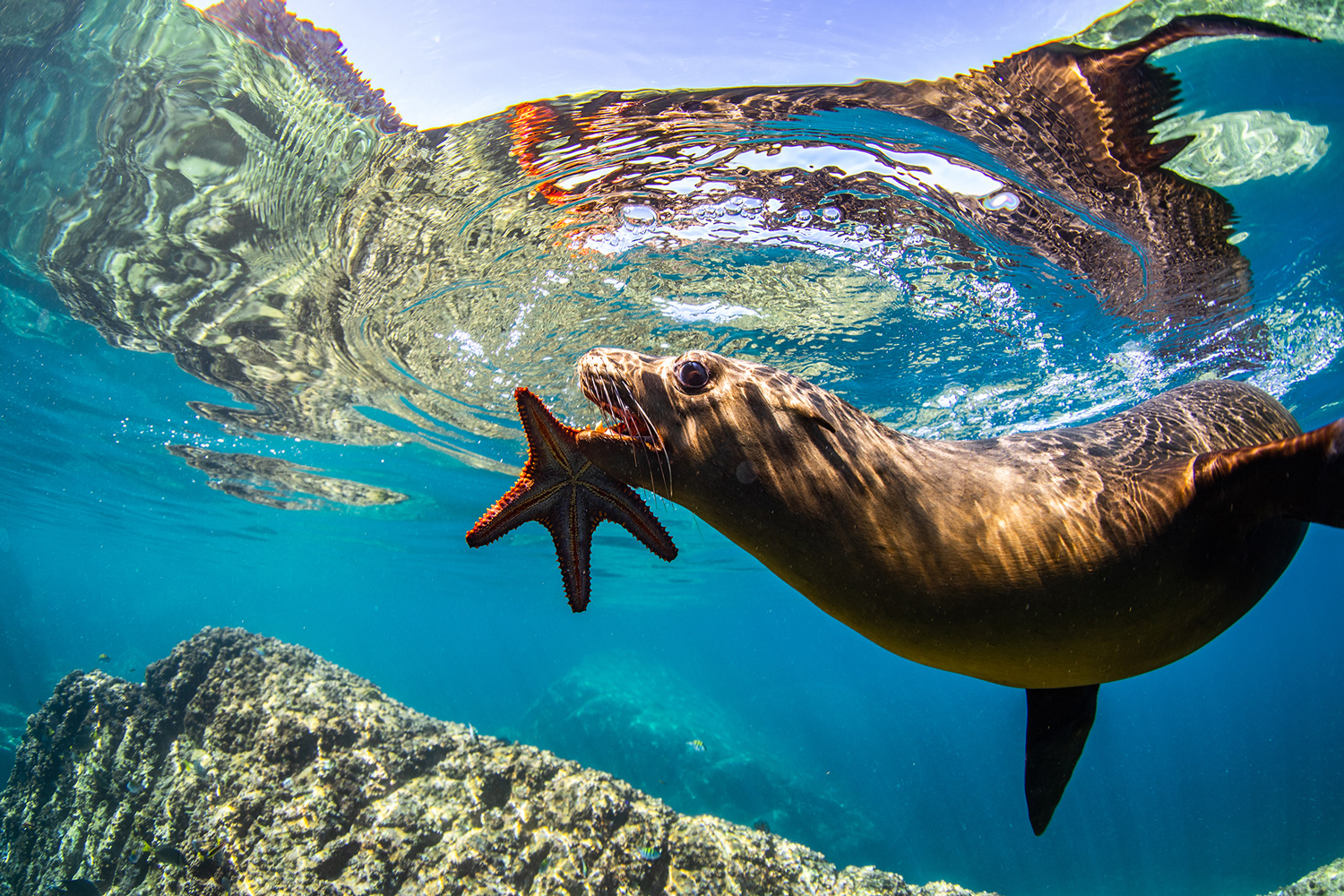MPA management with respect to marine mammals
Management framework
- Last updated / July 27, 2024
An MPA Management plan is an overarching plan through which all, or components of, the management of the MPA are described. The main plan may not contain all of the strategies and regulations. In this case, it should be accompanied by specific management plans and policy documents relating to specific aspects of marine park management or to specific species of concern.
The goals of the MPA should be explicitly outlined, ideally under the SMART (Specific, Measurable, Achievable, Realistic and Time-bound) framework, where feasible, as should more specific objectives [2]. The objectives within the MPA management plan should, if not specifically naming marine mammal conservation as an aim, have aims that will encompass marine mammal protection.

Marine mammal species, due to their unique biology and life histories, invariably pose unique challenges, and require particular management strategies to deal with such impacts as ship strike, underwater noise, whale- and dolphin-watching tourism and bycatch including entanglement in fishing gear [3].
Furthermore, compared to a large proportion of other marine organisms, marine mammals are slow-growing and slow breeding, meaning that, in the case of many species, the loss of a single individual is significant. Therefore, the separate strategies required to effectively manage marine mammal populations and across life-histories should be explicitly outlined in the management plan, an associated management plan, or operational policies specific to marine mammals [4]. It is important to recognise that collaborative approaches between organisations, countries and administrations may be required in order to develop a network of MPAs that enables the management of mobile species of marine mammals [1]. This is specifically applicable where migratory behaviours result in the movement of individuals between jurisdictions.
Marine mammals are inherently difficult to monitor and track. Because of this, and because of the ongoing improvement in research tools and methodologies such as GPS tracking, acoustic tracking, aerial surveys from drones, and data collected from tourist operators and citizen science, new scientific information regarding marine mammal ecology and threats is constantly emerging. Therefore, the MPA management plan should have the capacity to practice adaptive management have flexibility built within the plan to enable the accurate reflection of updated knowledge, approaches and protocols.
This built-in flexibility may also be required to react to unexpected incidents such as animal strandings, or when feeding areas have been damaged or destroyed by a human or natural disaster [4]. Ensuring a reactive and adaptive management plan will contribute to the efficacy of the overall management plan and the MPA.
Different marine mammal species diverge greatly in their biology, habitat use, movement and food, for example, meaning that management strategies may need to consider the range of species within the focus areas or consider those that move through management areas.
Secondly, the importance of marine mammal species, due to their function, charismatic ‘profile’ and status (threatened, vulnerable or endangered, for example), means that management plans for individual marine mammal species should be adapted at some governmental level. Species-specific conservation plans are frequently managed by national agencies, however MPA managers may also create action plans and species-specific policies and assessments [5].
Conservation Management Plans (CMPs) are an important conservation initiative of the IWC. They provide a framework for countries within the range of vulnerable cetacean populations (known as range states) to work together, and in collaboration with other relevant stakeholders, to protect and rebuild those populations. The CMP programme is managed by the Standing Working Group on CMPs in accordance with the principles outlined in the CMP work plan. The process for each CMP involves a number of interrelated stages: nomination; development; implementation; monitoring; and review. CMPs have been developed for four vulnerable cetacean populations: the Western North Pacific Gray Whale, the Western South Atlantic Southern Right Whale, the Eastern South Pacific Southern Right Whale, and the Franciscana dolphin (the first CMP for a small cetacean species).
If you would like to get in contact with us, please use the button below.
Copyright 2022 © All rights Reserved. Design by piknetart.com